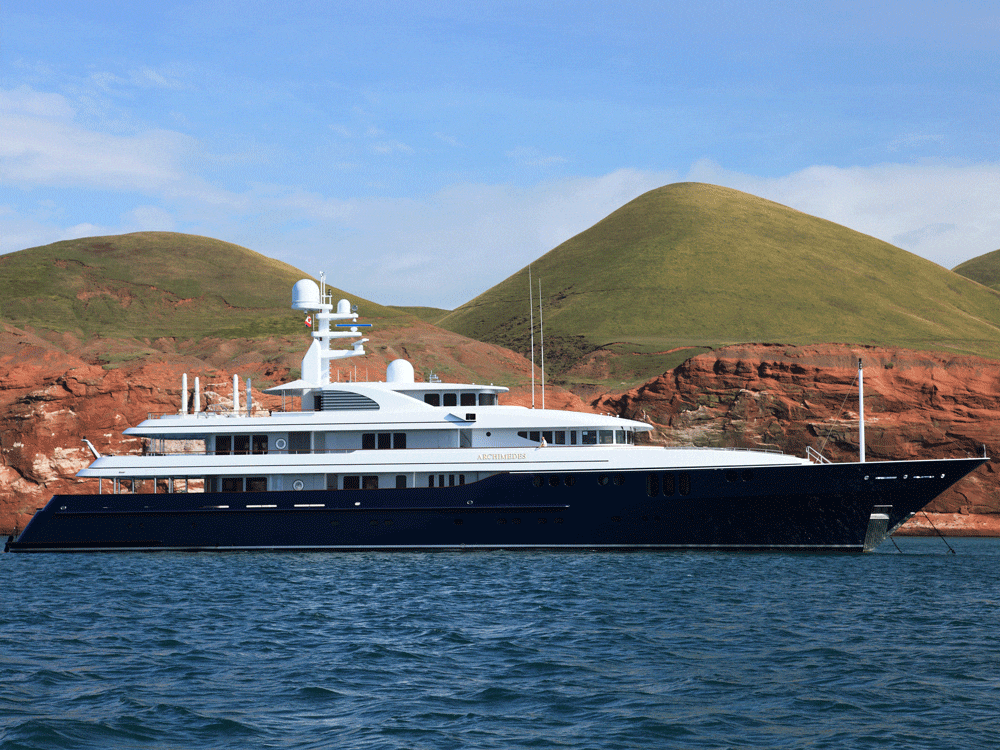Luxury yacht owners have joined forces with maritime researchers to obtain an accurate overview of ocean colour, to help improve our understanding of the changing ocean.
The initiative is being spearheaded by Dr Shubha Sathyendranath of Plymouth Marine Laboratory (PML) and Dr Robert Brewin of the University of Exeter, UK. Typically, scientists rely on satellites for ocean colour observation, using them to track phytoplankton. These are tiny, plant-like organisms, living near the ocean surface, which use photosynthesis to capture CO2 from the atmosphere – thereby “playing a vital role in regulating our climate”, PML says.
Different types of phytoplankton have different pigments, which affect the colour of the light they reflect. By analysing the colour of the ocean from the satellite data, scientists can estimate the abundance of phytoplankton – with more phytoplankton generally indicating that more CO2 is being absorbed from the atmosphere and stored in their bodies.
PML continues: “Ocean colour observations have revealed just how much photosynthesis is taking place in the ocean – about 50gt of carbon per year, making this one of the largest fluxes of carbon on the planet.” This satellite-sourced data can also be used to determine the locations of harmful algal blooms and sediment plumes – and even to track waterborne diseases such as cholera.
There is a potential economic advantage too: “Maps of phytoplankton [or more precisely, chlorophyll] distribution derived from satellite data are used to predict where fisheries production is likely to be high, and provide valuable information to fishers,” PML says.
However, the satellites can only go so far. One drawback, PML explains, is that satellite ocean colour instruments cannot ‘see’ through clouds. Also, less than 10% of the light detected by satellite instruments actually originates from the ocean: “The vast majority comes from the atmosphere and glint from the surface of the water”, the group says. “Scientists can correct for this interference but, to develop the methods to do so, they need to simultaneously collect data via satellite and at the water surface at representative locations around the globe.”
Step forward philanthropists Jim and Marilyn Simons, creators of the Simons Foundation and owners of the 2008-built, 68m x 12.3m motor yacht Archimedes. For this project, the yacht has been kitted out with special instruments to capture data at the water surface during its sailings. PML’s Sathyendranath comments: “Archimedes travels to parts of the ocean that are rarely sampled – such as remote areas of the Atlantic, Pacific and Southern Oceans – so the information it gives us is incredibly valuable.”
A hyperspectral radiometer (used to measure light at various wavelengths) has been mounted on Archimedes’ bow, and this will enable the yacht to collect in-situ data to compare with the ocean colour data captured via satellite. PML explains: “Using the data from Archimedes, Brewin and Sathyendranath can develop and fine-tune algorithms that they apply to raw satellite data to correct for atmospheric interference and surface glint, thereby revealing the true picture of ocean colour.
“Until now, ocean colour satellites have typically measured light at [up to] 10 different wavelengths…future missions will carry hyperspectral instruments that will provide a lot more information about the colour of the ocean and what is taking place below the surface.”
For example, hyperspectral radiometers can help scientists to observe different types of phytoplankton according to their colour ‘signatures’ – a critical distinction, as “some cause carbon to be transported to the deep sea, locking it away for hundreds of years, whereas others don’t – because of their size, sinking velocity, place in the food web and other factors”, PML states.
All data from this project will be made publicly available to researchers through NASA’s SeaBASS database and the Simons Foundation’s CMap portal. PML’s hope is that Archimedes won’t be the last privately owned vessel to offer support to researchers – as Sathyendranath puts it: “I feel this is a great model for how boat owners and scientists can work together to enable a better understanding of the marine environment.”






